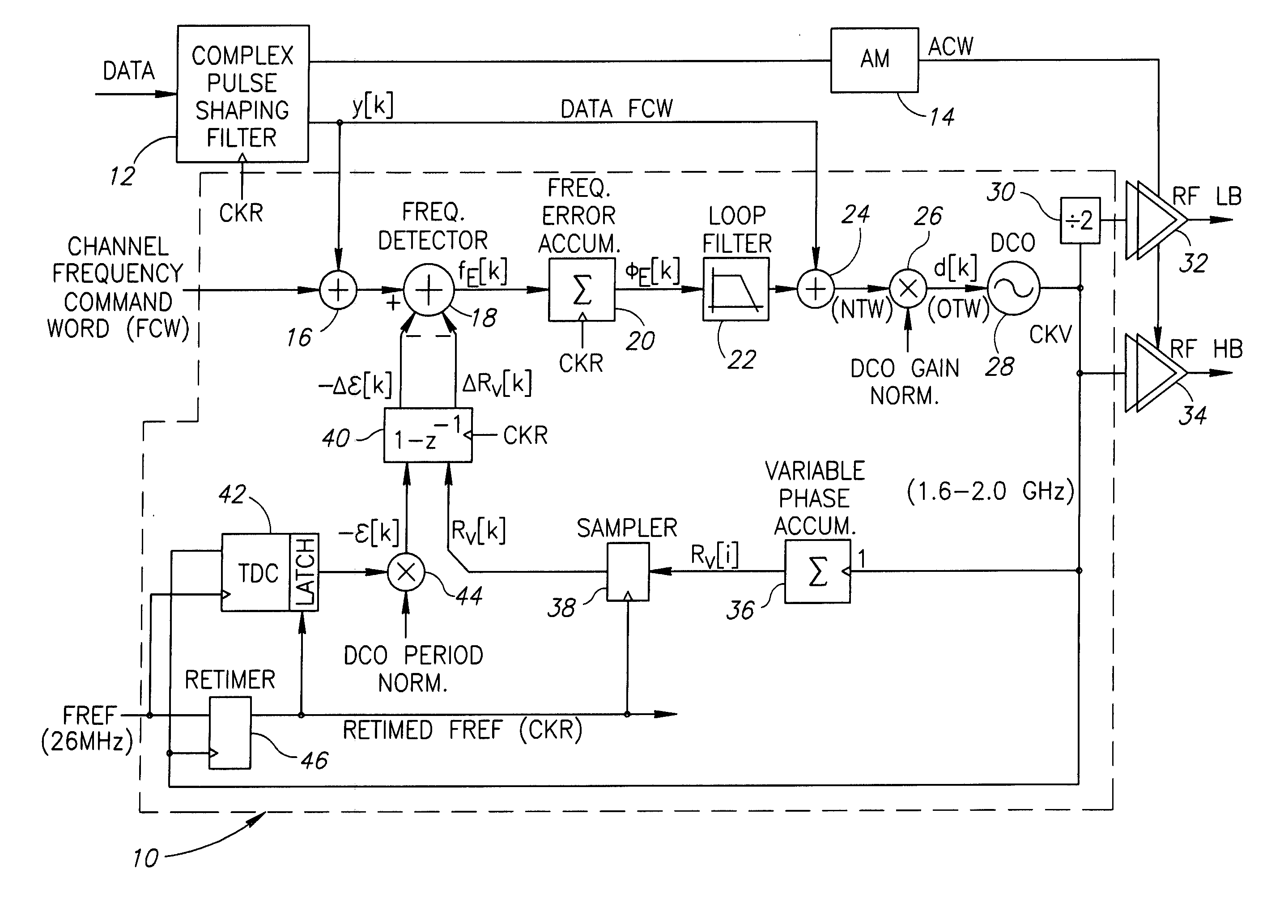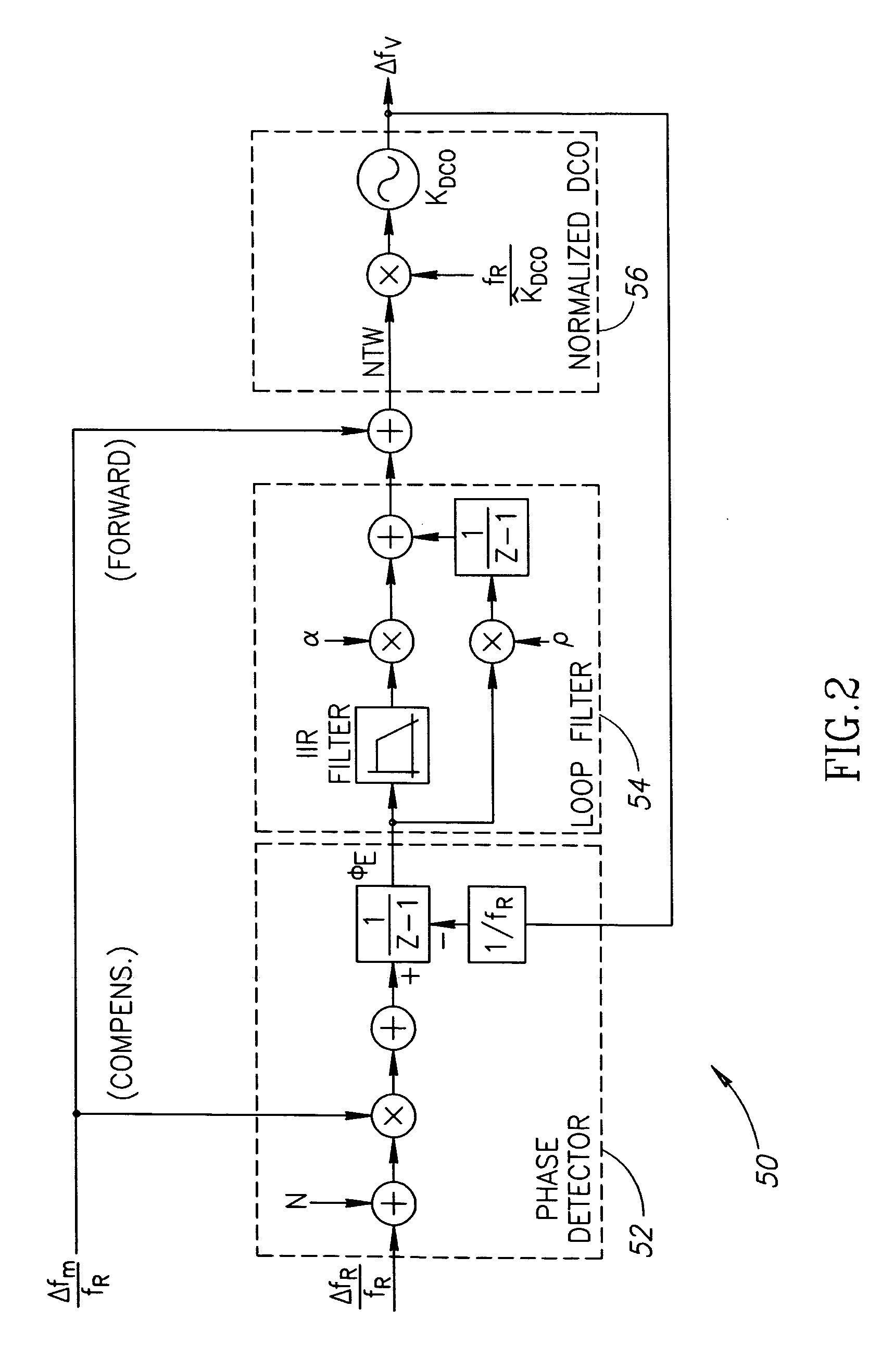Gain calibration of a digital controlled oscillator
a digital controlled oscillator and gain technology, applied in the field of data communication, can solve the problems of a slow time constant of 200 ms, the cost of additional circuitry amounting to approximately 13 of the pll, and the technique is mostly analog in natur
- Summary
- Abstract
- Description
- Claims
- Application Information
AI Technical Summary
Benefits of technology
Problems solved by technology
Method used
Image
Examples
Embodiment Construction
[0039]
Notation Used ThroughoutThe following notation is used throughout this document.TermDefinitionADPLLAll Digital Phase Locked LoopASICApplication Specific Integrated CircuitCDMACode Division Multiple AccessCKRRetimed Reference ClockCKVVariable Oscillator ClockCMOSComplementary Metal Oxide SemiconductorDCODigitally Controlled OscillatorDECTDigital Enhanced Cordless TelecommunicationsDRPDigital RF Processor or Digital Radio ProcessorEDGEEnhanced Data rates for GSM EvolutionFCWFrequency Command WordFPGAField Programmable Gate ArrayFREFFrequency ReferenceGFSKGaussian Frequency Shift KeyingGSMGlobal System for Mobile CommunicationsHBHigh BandHDLHardware Description LanguageICIntegrated CircuitLBLow BandLMSLeast Mean SquaresLPFLow Pass FilterMOSCAPMetal Oxide Semiconductor CapacitorPLLPhase Locked LoopPVTProcess, Voltage, TemperatureRFRadio FrequencyRMSRoot Mean SquareTDCTime to Digital ConverterUMTSUniversal Mobile Telecommunications SystemVCOVoltage Controlled OscillatorWCDMAWideban...
PUM
 Login to View More
Login to View More Abstract
Description
Claims
Application Information
 Login to View More
Login to View More - R&D
- Intellectual Property
- Life Sciences
- Materials
- Tech Scout
- Unparalleled Data Quality
- Higher Quality Content
- 60% Fewer Hallucinations
Browse by: Latest US Patents, China's latest patents, Technical Efficacy Thesaurus, Application Domain, Technology Topic, Popular Technical Reports.
© 2025 PatSnap. All rights reserved.Legal|Privacy policy|Modern Slavery Act Transparency Statement|Sitemap|About US| Contact US: help@patsnap.com



